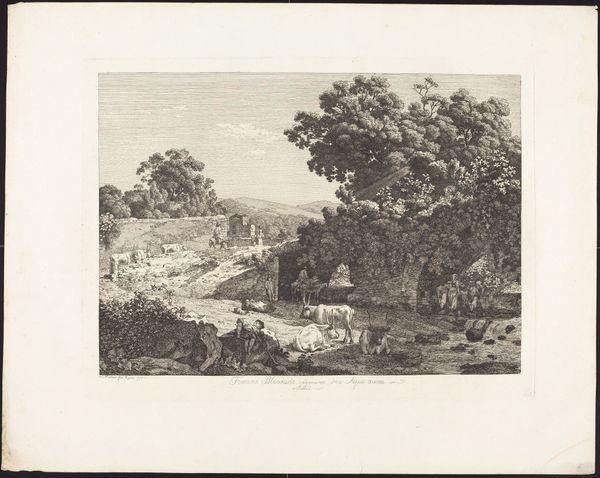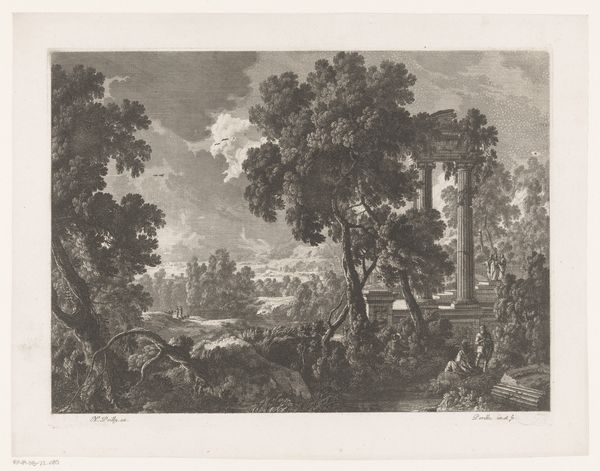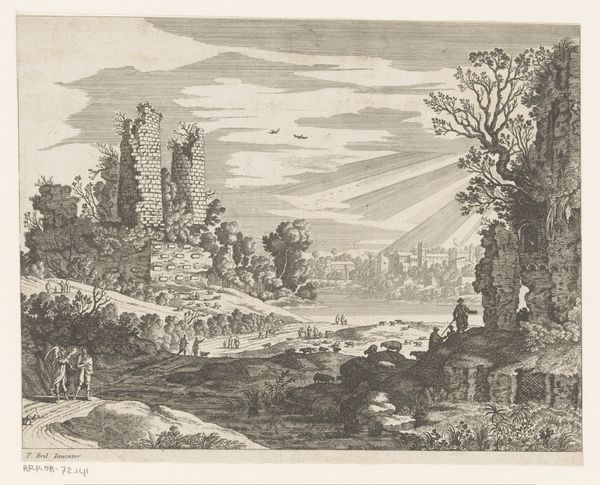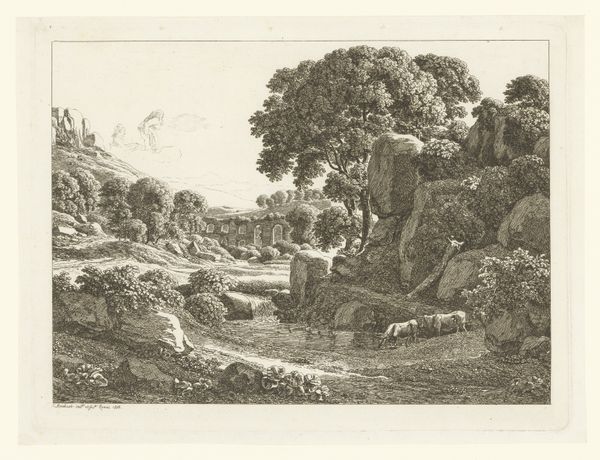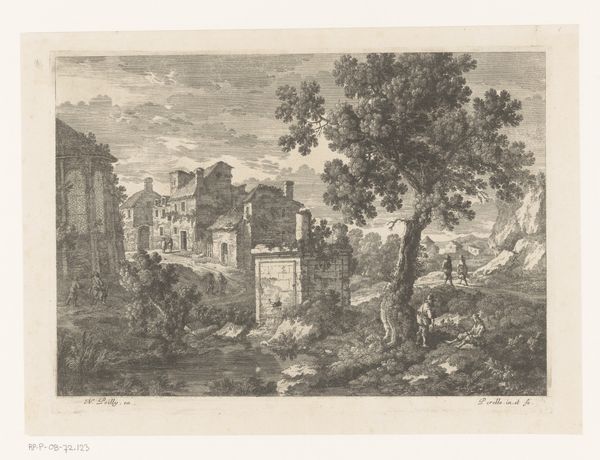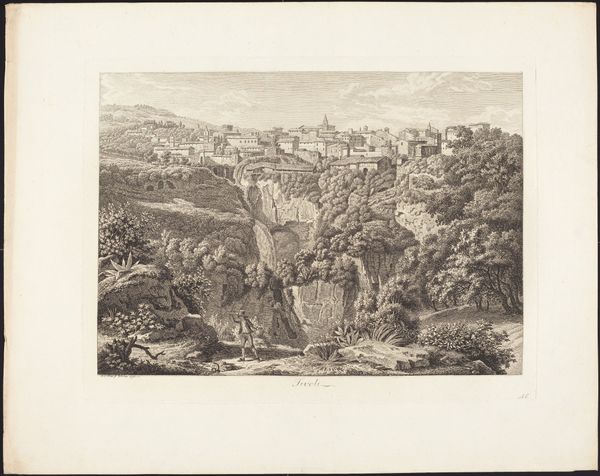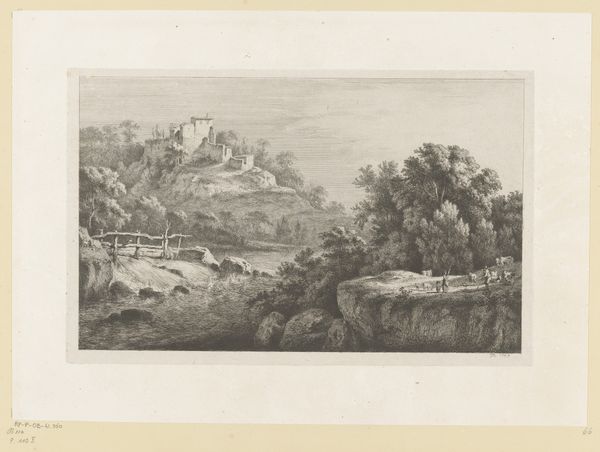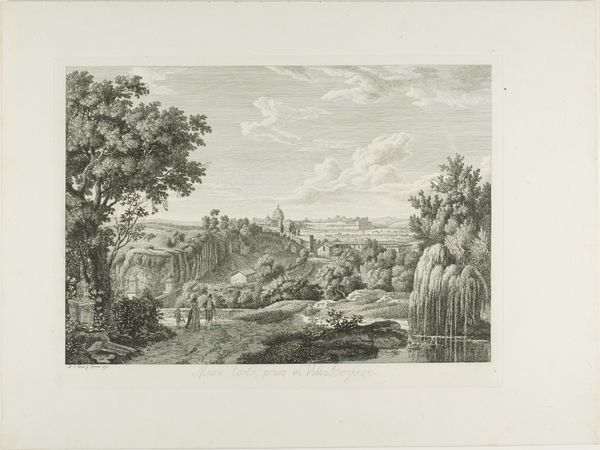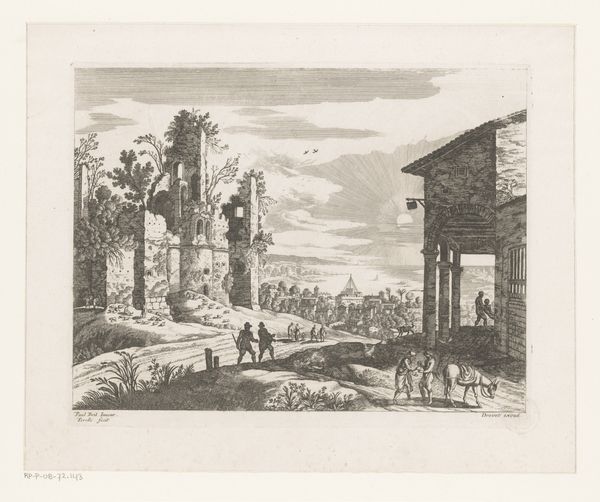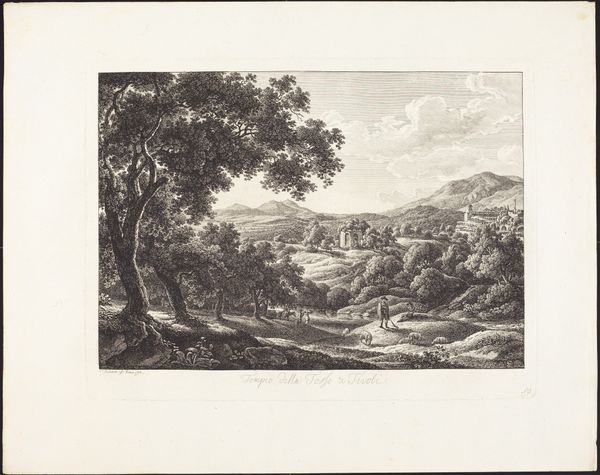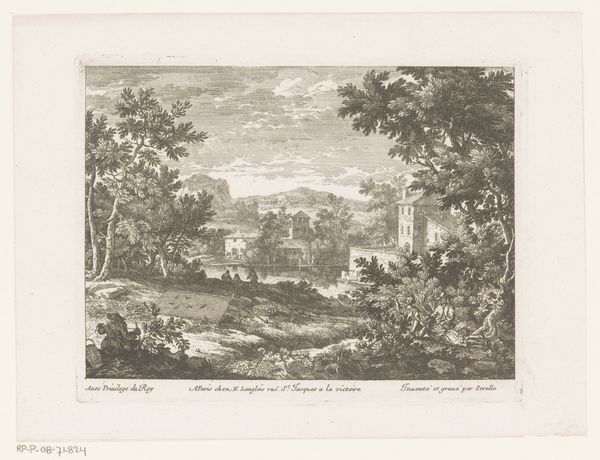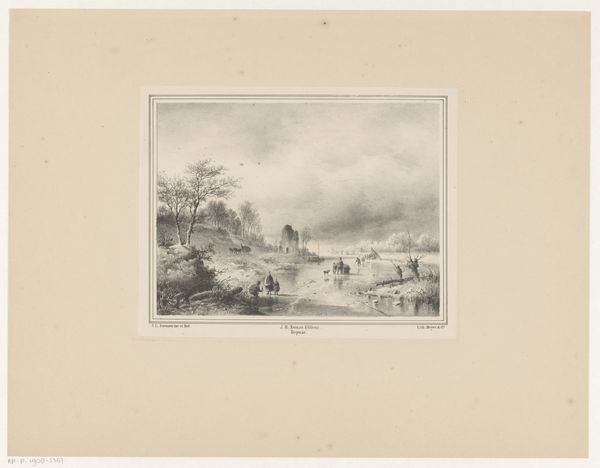
print, paper, engraving
#
neoclacissism
#
ink paper printed
# print
#
old engraving style
#
landscape
#
classical-realism
#
paper
#
line
#
cityscape
#
engraving
Dimensions: plate: 27.1 x 37.5 cm (10 11/16 x 14 3/4 in.) sheet: 39 x 49.2 cm (15 3/8 x 19 3/8 in.)
Copyright: National Gallery of Art: CC0 1.0
Curator: Look at this atmospheric print by Albert Christoph Dies titled "Terme di Caracalla," created in 1793. Dies captures the grandeur of the ancient baths in this finely detailed engraving. Editor: Oh, wow, a perfect wistful, almost melancholy scene! It looks as though time has gently eroded the world depicted, that romantic vision, doesn’t it? I mean look at the line work. It breathes a certain peace and reflective solitude. Curator: Precisely! The Baths of Caracalla themselves were, of course, a symbol of Roman imperial power and culture. What Dies achieves here, though, is a comment on the shifting relationship between power and the experience of the past. These ruins invite a dialogue, a kind of historical tourism. Editor: Absolutely, I’m now imaging folks dressed in linen meandering through these glorious crumbling edifices. Do you notice the figures down front? Are they drawn towards that ancient knowledge? I am. Curator: I like that. Indeed, their placement prompts us to think about the public’s relationship to this monumental, historic architecture, and how society collectively reinterprets these places over time. Notice how Dies frames Caracalla. It seems he considers humanity’s place in this long history. Editor: It's all a bit of a reverie, no? As though the viewer were drifting back through the centuries toward something golden. The stark print aesthetic definitely speaks to the long shadow cast by the Roman Empire, how it shaped so many things after. It is incredible. Curator: Definitely a nod to the cultural weight. Looking at Dies' depiction of the Baths of Caracalla, one can't help but consider the ongoing process of reinterpreting history. The composition and style of "Terme di Caracalla" makes the piece thought provoking. Editor: Exactly, I will continue to sit here dreamily gazing into a version of the past that I suppose is also dreaming back. What an achievement of classical-realist thought.
Comments
No comments
Be the first to comment and join the conversation on the ultimate creative platform.
